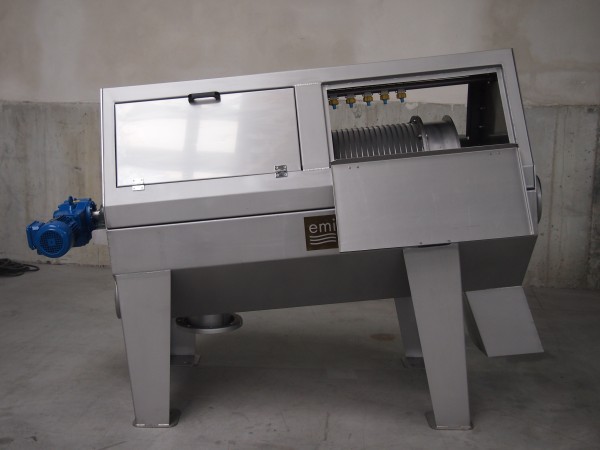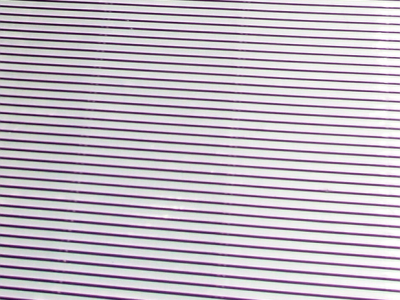

An advanced device for separating solid elements from wastewater, in which the inflow is directed to a rotating slotted drum, from where the water escapes through the slots, and the contaminants are removed to the outside. Rotary screens with internal inflow have a wide range of applications from the food industry to plastic recycling.
Advanced device for separating solid elements from the wastewater stream.
The inflow is directed into the interior of the rotating slotted drum. Water escapes through the slots, and contaminants are removed to the outside. The drum rotates under a set of high-pressure flushing nozzles.
Rotary screens with internal inflow have a very wide range of applications, from the food industry to plastic recycling.
Thanks to the use of reinforced and sealed bearings, EMI rotary screens are resistant to rapidly changing amounts and characteristics of wastewater. Reducing the number of failures in the case of this sensitive element of the treatment plant translates directly into the overall availability and reliability of the entire installation, and therefore also its operating costs.
We offer many different nozzles for the screen flushing system. Their cleaning and replacement do not require the use of tools and do not take more than a few minutes.
Proven materials allow for reducing purchase and service costs. When selecting nozzles, we pay attention to the balance between their service life and reliability.
Compared to perforation, slotted screens are much more resistant to clogging and much easier to clean. Depending on the characteristics of the wastewater, the slots can be from 0.25 to 2 mm in size, the drum width from 1000 to 2000 mm. Other dimensions are available on request
Mechanical separation, i.e. separating solid elements from the wastewater stream

Most industrial wastewater streams contain solids that must be removed before wastewater reaches the treatment plant equipment. Removal of solids is necessary to protect pumps, mixers, sensors and other system components from blocking or even damage. In EMI installations, we use two stages of mechanical pre-treatment: coarse and fine. Coarse pre-treatment removes the largest elements, with a cross-section above 20 mm, and is carried out at the inlet to the first pumping station, before wastewater comes into contact with any pump. Coarse separation devices include vertical screens, basket screens and step/hook screens. The purpose of fine mechanical pre-treatment is to further remove solids, with their cross-section dropping below 3 mm, most often to 1 mm, although in some cases it is appropriate to use even smaller cross-sections (up to 0.25 mm). At this stage, rundown and rotary screens are used. The latter type of screen is used in a system with external or internal inflow. Mechanical pre-treatment involves very low costs, mainly resulting from the consumption of water rinsing the screens. No reagents are used, and energy consumption is minimal. Mechanically pre-treated wastewater is suitable for further treatment by physico-chemical and biological means.